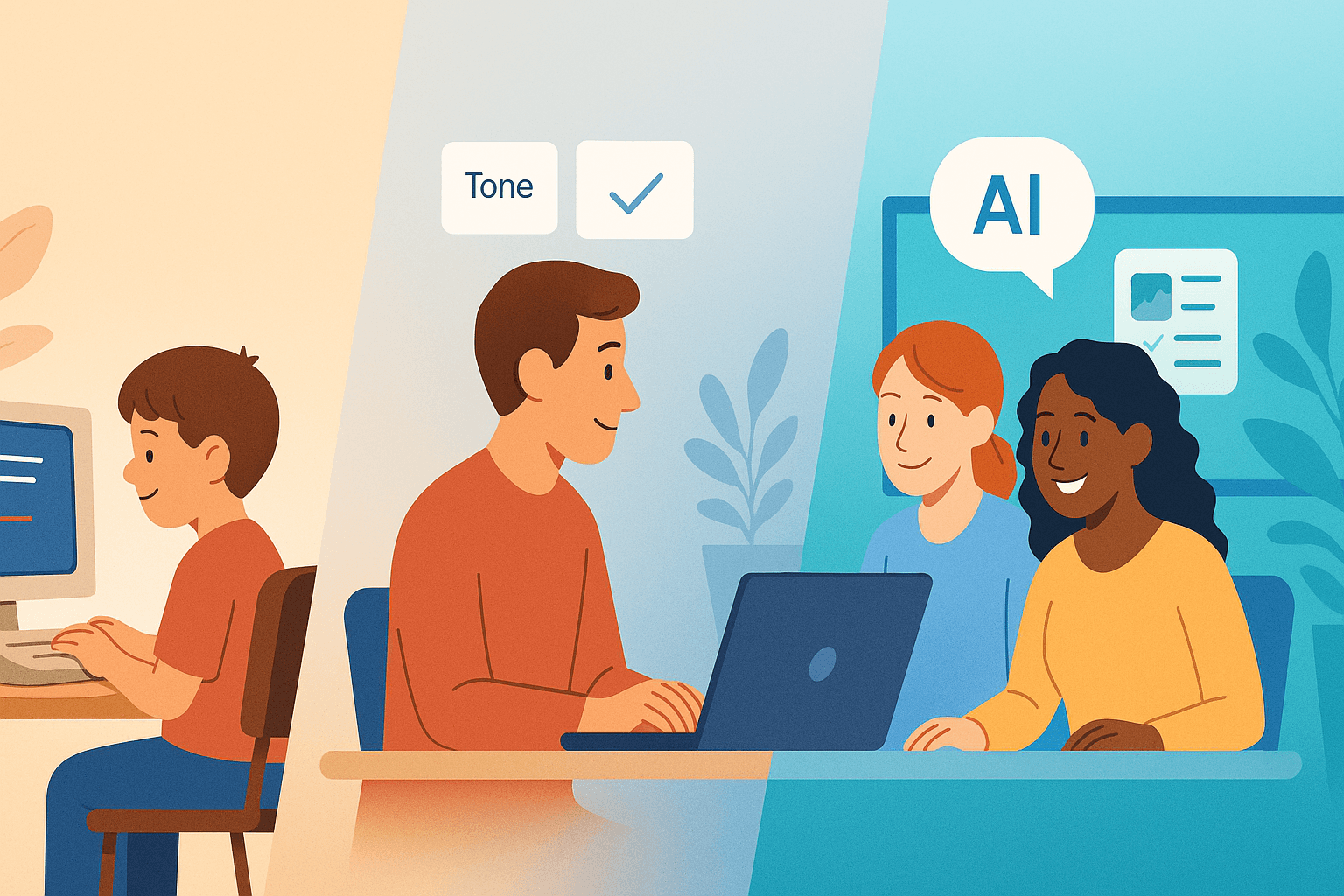5 min
4 ago 2025
Discover how Cognitive Load Theory combined with AI tools can enhance digital learning experiences by managing cognitive load for better engagement and outcomes.
Lara Cobing

Ever tried drinking from a firehose? That's what poor learning design can feel like—an overwhelming rush of information with no clear path to actually absorb it. Thankfully, learning science offers us a powerful framework to manage this challenge: Cognitive Load Theory.
But today, we’re going one step further. Imagine combining the wisdom of Cognitive Load Theory with the efficiency of AI-powered authoring tools. That’s when learning experiences shift from overwhelming to empowering.
Let’s unpack how understanding—and optimizing—cognitive load can transform your digital learning programs, and how the right tools make it easier than ever.
What Is Cognitive Load Theory? (Learning Science Made Simple)
Introduced by Australian educational psychologist John Sweller in the late 1980s, Cognitive Load Theory (CLT) explains how human brains process and retain new information. At its core, it suggests that our working memory has a limited capacity. Overloading it with too much information at once? Bad idea.
Cognitive load breaks down into three types:
Intrinsic Load: The inherent complexity of the content itself (e.g., learning calculus vs. learning basic addition).
Extraneous Load: The unnecessary mental burden caused by confusing layouts, irrelevant information, or poor design.
Germane Load: The beneficial mental effort we spend on making sense of the information and integrating it into what we already know.
When cognitive load is managed well, learners focus their brainpower where it matters most. When it's ignored? Learners disengage, forget, or worse—get frustrated and abandon the course entirely.
Why Reducing Cognitive Load Matters in eLearning
Think about the last mandatory compliance training you sat through. Were you clicking "Next" as fast as you could, just to escape the sea of text and endless bullet points? That’s cognitive overload at work.
Digital learners today—whether onboarding to a new job, developing leadership skills, or updating technical knowledge—are already juggling dozens of demands on their attention. Effective eLearning design acknowledges this reality by reducing unnecessary burdens and keeping learning focused, digestible, and meaningful.
Recent studies, such as a 2022 article in the Educational Psychology Review, emphasize that managing cognitive load is essential for improving learner outcomes in digital learning environments.
Smarter Cognitive Load Management
Let’s dive into practical strategies based on Cognitive Load Theory—and how Mindsmith’s AI-powered authoring tools make smarter course design not just possible, but natural.
1. Microlearning to Manage Intrinsic Load
Breaking down complex material into bite-sized, easily digestible pieces is one of the best ways to manage intrinsic load. Instead of overwhelming learners with a 30-minute lecture on cybersecurity protocols, why not deliver a series of three-minute modules focusing on one concept at a time?
Mindsmith’s AI features help learning professionals quickly chunk large training topics into intuitive microlearning pathways, turning cognitive mountains into manageable molehills. Its chunking automation divides complex subjects into logical, learner-friendly modules, allowing content to be as approachable as possible.
🧠 Real-world example: During the COVID-19 pandemic, OttoLearn's microlearning platform enabled organizations to rapidly deploy and update safety protocol training. This mobile-first, on-demand approach ensured that employees mastered and retained new procedures, such as hand hygiene and PPE usage, adapting swiftly to evolving guidelines.
2. Streamlining Content to Cut Extraneous Load
Flashy animations, redundant content, and busy slide designs don't impress—they distract. Reducing extraneous load means cutting the clutter and emphasizing clarity.
Mindsmith supports this principle by offering clean, minimalist templates and smart design suggestions. Its AI recommends when you might be overloading a slide or screen, helping instructional designers focus on what truly matters. With smart visual prompts that enhance comprehension instead of overwhelming learners, Mindsmith keeps cognitive load light and learning experiences engaging.
✂️ Quick tip: Every time you feel tempted to add another pop-up or hover effect, ask yourself: "Is this helping the learner or just showing off?"
3. Enhancing Germane Load with Visuals and Modular Paths
Not all mental effort is bad. Germane load—the mental effort devoted to understanding and integrating new knowledge—is actually good for learning. Smart visuals, diagrams, and modular course designs promote this.
In fact, Mayer’s research shows that well-designed visuals paired with concise text significantly enhance comprehension and retention.
Mindsmith’s AI-driven authoring makes it easy to add purposeful visual aids, decision-tree pathways, and modular structures that guide learners in making meaningful connections. Its modular design tools help learning professionals build flexible pathways tailored to different learning needs without causing cognitive gridlock. Mindsmith acts like an instructional designer's co-pilot—always nudging content toward clarity, engagement, and effectiveness.
Conclusion: Smarter Design, Better Learning Outcomes
Learning should never feel like drinking from a firehose.
By applying Cognitive Load Theory thoughtfully—and leveraging AI tools like Mindsmith—learning professionals can lighten the cognitive load, empower deeper engagement, and drive better outcomes.
Ready to create lighter, smarter, more powerful learning experiences? 👉 Explore how Mindsmith can help you design for cognitive ease today.



